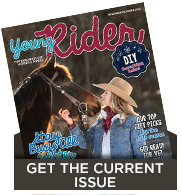Longeing is a crucial skill needed to exercise and train your horse in a variety of situations. Some reasons you might choose to longe instead of ride include:
◆ Horse is fresh and feeling full of himself
◆ Green horse is learning voice commands
◆ Vet needs to observe lameness/evaluate the horse’s gait
◆ Equipment fit evaluation
◆ Horse has a rub or injury in the saddle or girth area
◆ Beginner is learning to ride
◆ Handler is short on time
The Set Up
No matter your reason for longeing, the safety considerations are the same. Shown are examples of longeing setups with a bridle with a longeing attachment and a longeline run through one bit ring, over the poll, and clipped to the opposite bit ring. You can also use a rope halter if none of the above are available.
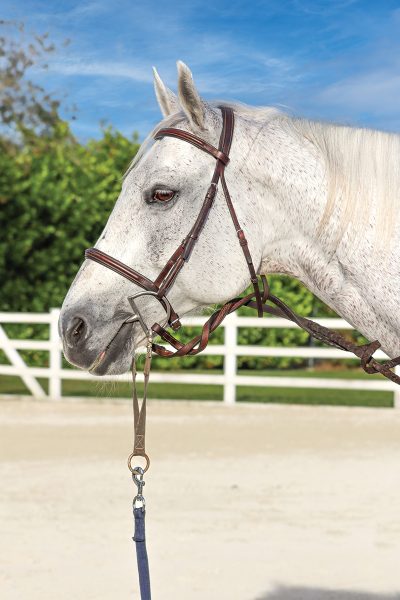
It’s always best to use an option that places even pressure on your horse, as opposed to using a chain or clipping a longeline to one side of the bit. If you choose to longe with the reins on the bridle, you should be sure to secure the them through the throatlatch.
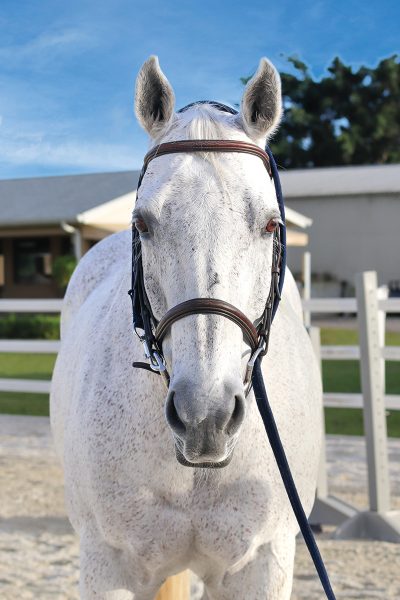
Proper longeing begins with organizing the equipment appropriately. The line should be passed through the palm of your hand repetitively rather than wound around your hand. If the line were to be wrapped around your hand, you risk severe injury to your hand or fingers if the horse were to take off unexpectedly.
How to Longe
When the line is passed through the palm of your hand the correct way, you can let out one section at a time easily as the horse moves away from you out onto the circle.
The line should be held in your hand closer to the horse’s head, and the whip should be held in your other hand, positioned straight out toward your horse’s tail. Think of forming a triangle between yourself, the bit, and the horse’s tail.
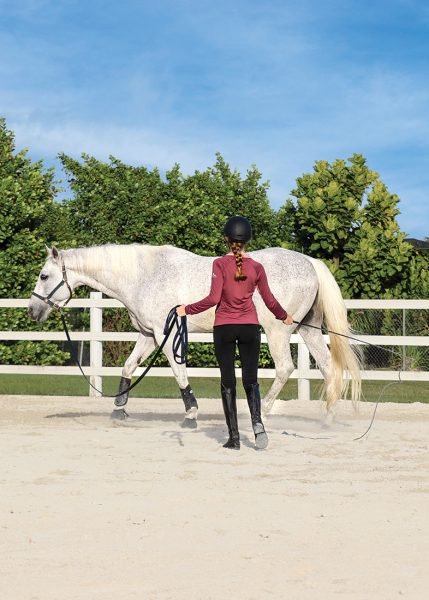
Once your horse is at the far end of the longeline and moving on the circle, it’s time to assess the horse in front of you. If he seems relaxed, it’s best to let him walk for a few minutes so he can start to warm up and doesn’t expect to be chased immediately upon starting to longe.
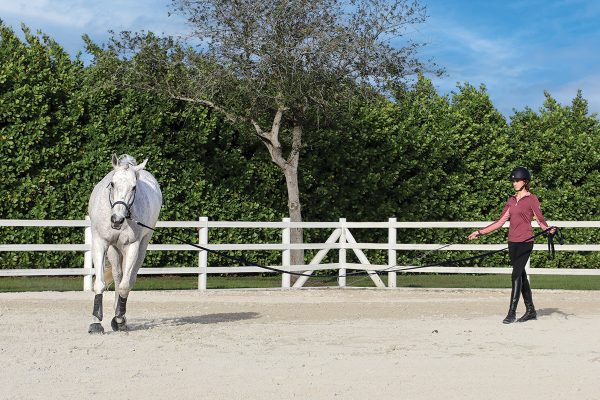
If your horse seems tense, it’s best to allow him to trot or canter, but a few minutes later in the session, ask him to peacefully walk. Sometimes with anxious or hot horses, it’s helpful to only let him out about halfway on the line for the first few minutes until he settles down.
Once he relaxes, he can move out onto the full circle. Anxious horses may do better without the use of a whip. You can tuck the handle into your armpit with the whip facing backward or leave the whip on the ground.
Asking for transitions is one valuable exercise you can use in order to engage your horse’s mind and body, recentering his focus on a task.
Troubleshooting
Horses should never be running frantically on the longeline, nor should the whip ever be waved high in the air or cracked loudly. Unfortunately, these tactics are common for some who view longeing as an “energy burner” for their horse and nothing more.
The most valuable longeing sessions are those that are treated as a training session, similar to when the horse is being ridden. While longeing, the role of the longeline is the same as your hands on the reins, and the role of the whip is the same as your legs.
If your horse feels heavy on the end of the line, you can half-halt until he becomes lighter. If he is not engaged in his hind end and moving forward, you can urge him forward with the whip.
For horses that tend to fall in on the circle and invade your space when longeing, hold the whip so that it points at the horse’s shoulder until he moves out of your space and back onto the proper circle at the end of the line.
Another option that may be available to you if you have a round pen at the property where you keep your horse is to longe your horse loose in a round pen. For this, no longeline is necessary. All communication will be through your body language, vocal cues, and the whip. As is always the case around horses, keeping a relaxed attitude is key so that your body language and voice can be understood clearly and correctly.
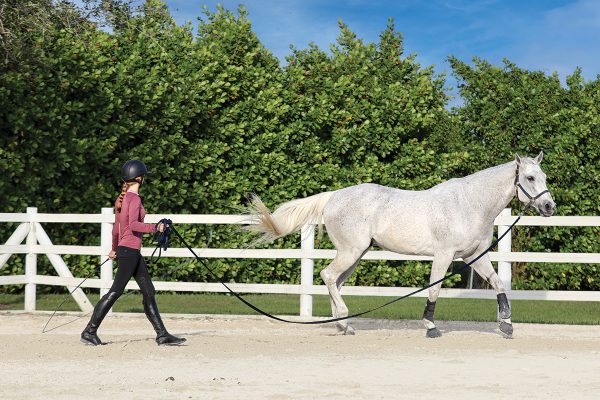
A quality longeing session should leave you feeling that your horse was exercised safely and with purpose. If that has been accomplished, then you did a great job!
This article about how to longe a horse appeared in the May/June 2023 issue of Young Rider magazine. Click here to subscribe!

